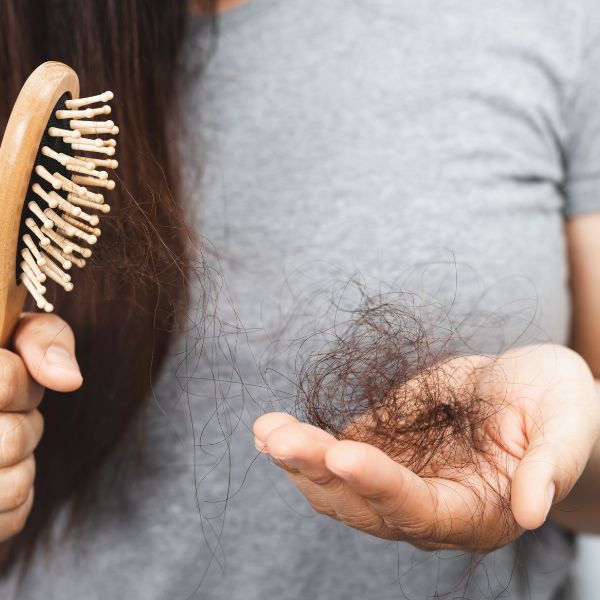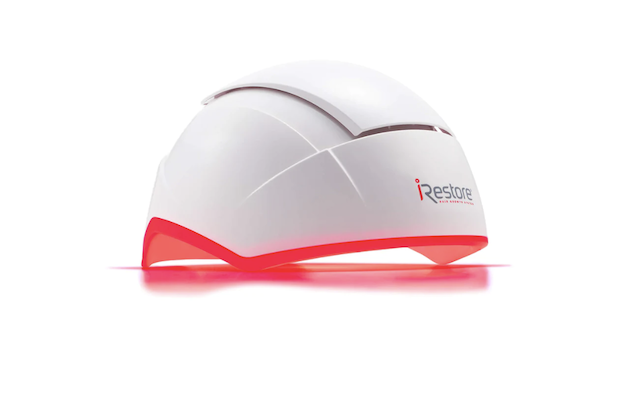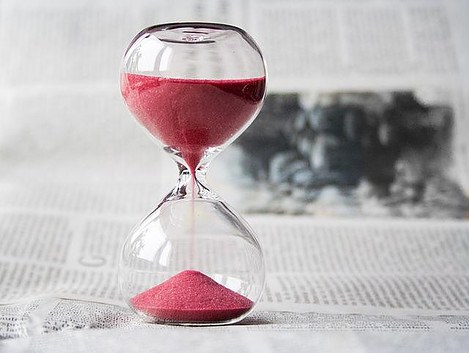Red light therapy for hair growth is an increasingly popular way to help promote natural hair growth. With the help of red light therapy, many individuals are able to achieve longer, thicker, and healthier looking hair. In this blog post, we’ll explore how red light therapy works, what you can expect from the treatment, and how it can help with hair growth. By the end of this post, you’ll have a better understanding of how red light therapy for hair growth can help you reach your hair goals.
What is Red Light Therapy?
Red Light Therapy (RLT) is an effective treatment for many skin-related conditions. It involves exposing your skin to low-wavelength red light in order to stimulate cellular regeneration, reduce inflammation, and improve overall appearance.
RLT has been used for decades to treat various medical conditions, and is now used as a cosmetic treatment to promote healthy looking skin.
The most commonly discussed use of RLT is for hair growth. Studies have shown that red light exposure can stimulate the scalp and encourage new hair growth. In one study, participants saw an increase in hair count after 8 weeks of using RLT twice a week. Addtionally, clinical trails shows that RLT can increase the size and density of existing hairs, while also helping to decrease hair loss.
In addition to hair growth, RLT is also said to help reduce wrinkles, scars, and redness, and even help treat acne. It’s thought that the infrared light helps to boost collagen production in the skin, which helps reduce the appearance of wrinkles and scars. In addition, red light helps to kill bacteria that cause acne breakouts.
When considering red light therapy for any purpose, be aware that results may vary from person to person. Moreover, it is essential to note that while some people report positive results after only a few treatments, others may need more treatments before noticing any changes. As with any treatment, always talk to your doctor before trying RLT.
Causes of Hair Loss

Hair loss can have a variety of causes, and understanding the underlying reason is the first step in finding the most effective treatment.
Here are some common causes of hair loss:
Genetics: Genetics play a role in many types of hair loss, including androgenetic alopecia (male- and female-pattern baldness) and alopecia areata. In some cases, family history of balding can be a strong predictor of hair loss.
Hormonal changes: Hormonal changes can cause temporary hair loss in both men and women. Pregnancy, childbirth, menopause, thyroid issues, and changes in hormone levels due to stress can all lead to temporary or even permanent hair loss.
Medical conditions: Certain chronic conditions such as lupus, diabetes, and anemia can lead to hair loss. Alopecia areata is an autoimmune disorder that can cause patchy hair loss.
Medications and supplements: Some medications, including certain beta-blockers, anti-depressants, blood thinners, hormonal medications chemotherapy drugs, and antibiotics can lead to temporary or permanent hair loss. Visit this page to learn more about medications that cause hair loss.
Stress: Stress can take a toll on our bodies, including causing temporary hair loss. Traumatic events such as a death in the family or major surgery can trigger telogen effluvium, a condition in which more hairs than normal enter the resting phase of the hair cycle.
Hairstyles and treatments: Over-styling and harsh chemical treatments such as perms, relaxers, and bleaching can damage the hair follicles and cause hair loss. Traction alopecia is a form of hair loss caused by pulling or tension on the hair due to tight hairstyles such as braids and extensions.
Red light therapy can help promote hair growth in many cases, but understanding the underlying cause of your hair loss is key to finding the best treatment plan for you.
Consult your doctor if you are worried about hair loss to determine the cause and find treatment options.
Benefits of Using Red Light Therapy for Hair Growth
Red light therapy has gained popularity recently for treating androgenetic alopecia (genetic hair loss). Studies have shown that red light or near infrared light can stimulate hair growth and improve the overall appearance of thinning hair.
Many people have seen positive results from using this treatment, such as an increase in hair counts, an improvement in hair thickness, and a boost in hair growth rate.
The effects of red light therapy on hair growth are largely determined by the area undergoing therapy. For example, red light therapy is most effective in treating hair loss around the crown and along the hairline.
Typically, those areas have fewer hairs per square centimeter than the surrounding areas, making it easier for the light to penetrate and stimulate the dormant follicles.
In addition to its effects on genetic hair loss, red light therapy can also be used to combat general hair loss caused by stress or other health issues.
While the exact mechanism is not yet fully understood, clinical trails has suggested that red light may help reduce inflammation and increase blood circulation. As a result, this can promote healthy hair growth and reduce the rate of shedding.
Overall, there are many potential benefits to using red light therapy for hair growth. The treatments are non-invasive and relatively inexpensive compared to other hair loss treatments, making RLT an option for those looking to treat their thinning hair.
With regular use, many people have seen a noticeable improvement in their hair quality and appearance.
Side Effects of Red Light Therapy?
When it comes to the side effects of red light therapy, the good news is that there are none. Red or infrared light therapy is a safe and effective treatment with no risk of serious side effects.
In fact, many people enjoy the pleasant warmth they feel while receiving the treatment, though you may experience some mild discomfort due to the heat.
Unlike other treatments like surgery or chemical treatments, there is no pain associated with red light therapy.
Therefore, RLT is an ideal choice for those who are sensitive to invasive treatments or just want to avoid the pain that can come with them.
The accessibility of red light therapy is also a major plus. You can easily find an office that offers this treatment, or even purchase a home device so you can use it whenever you please.
Plus, you won’t need any additional medications or tools to help you achieve the best results.
All in all, red light therapy is an incredibly safe and easy treatment option with virtually no side effects. So if you’re looking to promote hair growth, this is definitely worth considering.
iRestore Red Light Therapy Cap

The iRestore Red Light Therapy Cap is a revolutionary device designed to help restore hair growth in those suffering from common hair loss issues. This device uses LED light therapy to stimulate the scalp and promote hair growth in areas that have thinned or stopped growing altogether.
The iRestore Red Light Therapy Cap is a non-invasive and at-home solution that works to grow fuller hair within 3-6 months. It features 51-282 medical-grade lasers and LEDs, which are specifically designed to cover the scalp, hairline, and crown.
If you’re considering the iRestore Red Light Therapy Cap as a way to combat your hair loss, we recommend reading our full review to learn more about the benefits of this technology and how it can help restore your hair.
How Fast Will You See Results?

A common question people ask when considering red light therapy for hair growth is,“How fast will I see results?”
The answer to this question depends on a few factors, including the type of red light therapy you are using, your current level of hair loss, and your overall health.
For starters, if you are just beginning to experience hair loss, you may find that the results of red light therapy come quickly. Those with more significant levels of hair loss, however, may need to use red light therapy for a longer period of time before they start to see visible results.
Regardless of the severity of your hair loss, it’s important to note that red light therapy should be used as part of an overall hair growth plan. That means eating a healthy diet, taking vitamins, and using other hair products or treatments in conjunction with the red light therapy.
Doing all these things can maximize your chances of seeing quick results from the red light therapy.
It’s also important to stay consistent with your red light therapy treatments. Even if you don’t see results right away, keep up your regimen and make sure to follow the directions of your red light therapy device.
With patience and consistency, you should eventually start to see improved hair growth.
Bottom Line
The use of red light therapy for hair growth is an exciting breakthrough in modern science that has the potential to help many people restore their hair and gain a fuller, thicker head of hair.
Red light therapy has been proven to be a safe and effective option for those seeking to increase hair growth and improve the overall condition of their hair. With regular treatments, you can expect to see visible results in the form of healthier, stronger, and thicker hair.
Although the effects of red light therapy are not instantaneous, with consistent treatments and dedication, you should start to notice a difference in your hair growth over time.
So, if you’re looking for a natural way to boost your hair growth and restore your locks, then red light therapy might be just the answer you need.
Also worth checking out:
- iRestore Review (2022): Boost Your Hair Growth in 3 Months
- 5 Benefits of Low-Level Laser Light Therapy for Hair Loss – Boost Hair Growth Naturally
- 11 Incredible Infrared & Red Light Therapy Benefits You Didn’t Know About
